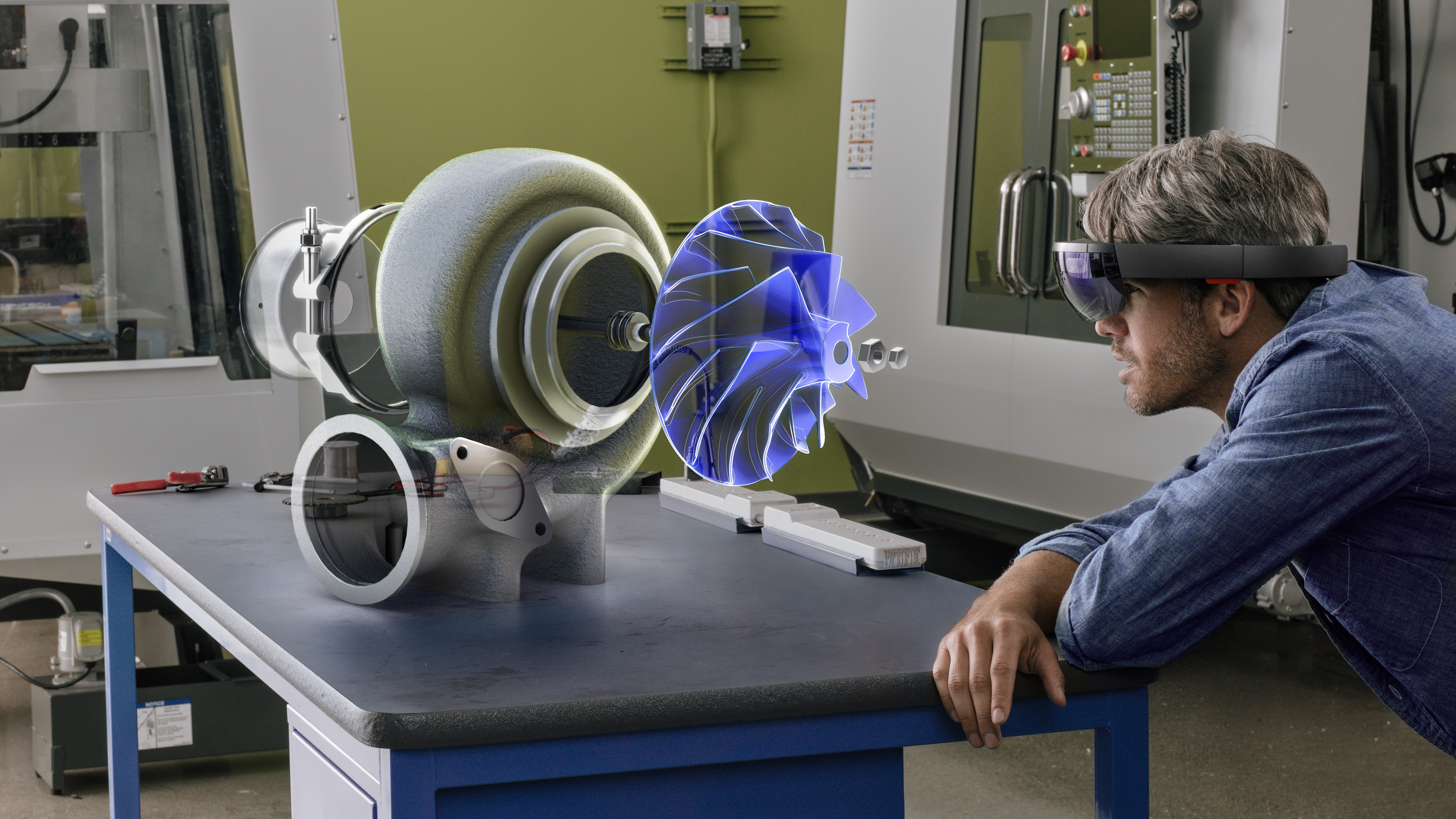Microsoft continues to improve technology HoloLens

While the world continues to gnaw the cactus of the system requirements of virtual reality devices, Microsoft continues to develop its related product called HoloLens , based on augmented reality technology.
Once again, Satya Nadella made a decision not to break into the already densely occupied market of virtual reality headsets, but to try to create a product that is close in spirit but much more understandable for the average person. It is also important that HoloLens already today can have quite adequate domestic use, while virtual reality technologies and corresponding devices will remain for geeks who will be ready to pay a lump sum for equipment and possessing a strong vestibular apparatus for at least a decade.
')
HoloLens - augmented reality headset, the first stage of technology, which science fiction writers have long been telling us about. It is still far to build a hologram hanging in the air, but the HoloLens kit (headset, sensors and cameras) can already successfully perform the function of a video call in augmented reality mode.
The biggest problem of both DR and BP technologies is the throughput of modern network equipment. These solutions imply freedom of movement, but, as if at the stage of early prototypes, the user has been tightly “fastened” to the computing unit and the socket by a bundle of wires for the first year.
Microsoft realizing the need to increase mobility has achieved some results in this direction. So, in the official blog of the company , a demonstration of HoloLens capabilities was presented, which shows the potential of the product.
The most important thing: reducing the load on the channel to quite adequate 30-50 Mbps instead of 2-3 Gbps, as it was before. This means that now HoloLens can be used not through a cable, but in conjunction with household Wi-Fi equipment, which is located in almost every home where there is Internet access.
In the demo, the developers show that HoloLens can be mounted even inside the car and “call up” in augmented reality mode right on the road.
Of course, such a reduction in the load on the channel could not help but affect the quality of the broadcast picture, simply because there are no miracles and Microsoft cannot deceive the laws of physics. However, in this approach, a sound marketing approach is clearly traced: you can hardly surprise anyone with a video link, but even if it’s a “clumsy” but bulky model of the interlocutor, quite the opposite.
Demonstration of the HoloLens car-based capabilities was not accidental. Microsoft itself recognizes that road transport is increasingly seen not only as a means of transportation, but also as a high-tech innovation platform. Keeping the trend of recent years, it is the demonstration of the ability of the system to work in such limited and difficult conditions is the best solution according to company representatives.
“This is a very complex scenario. It requires solving many engineering problems that arise when creating a consumer version of the product, ”says the official Microsoft blog.
The creators note that the installation required only two 3D cameras and a 50 Mbps channel, while the side receiving the signal in augmented reality mode can use a HoloLens headset or, importantly, HTC Vive to communicate with the passenger car.
Source: https://habr.com/ru/post/399573/
All Articles